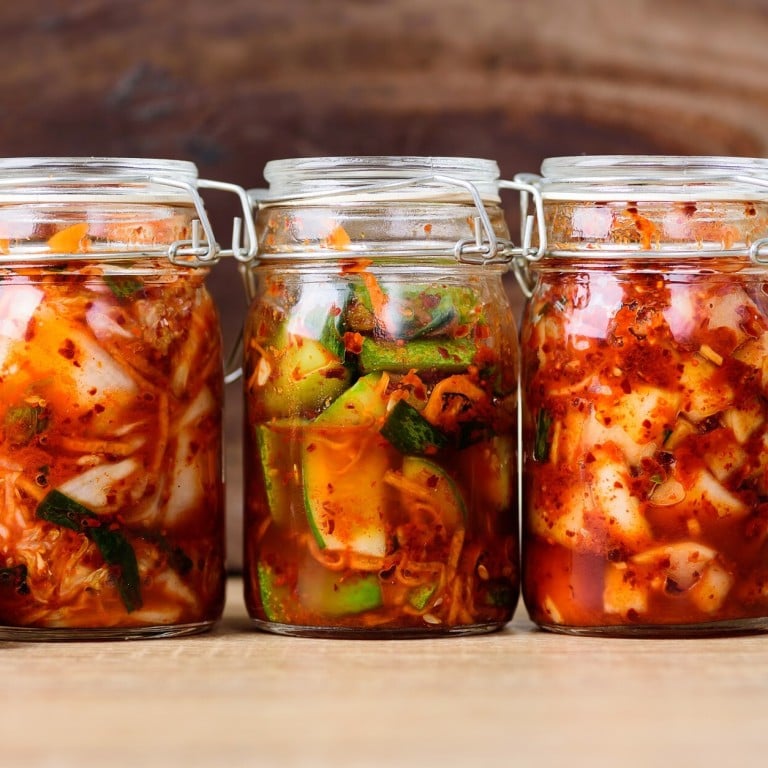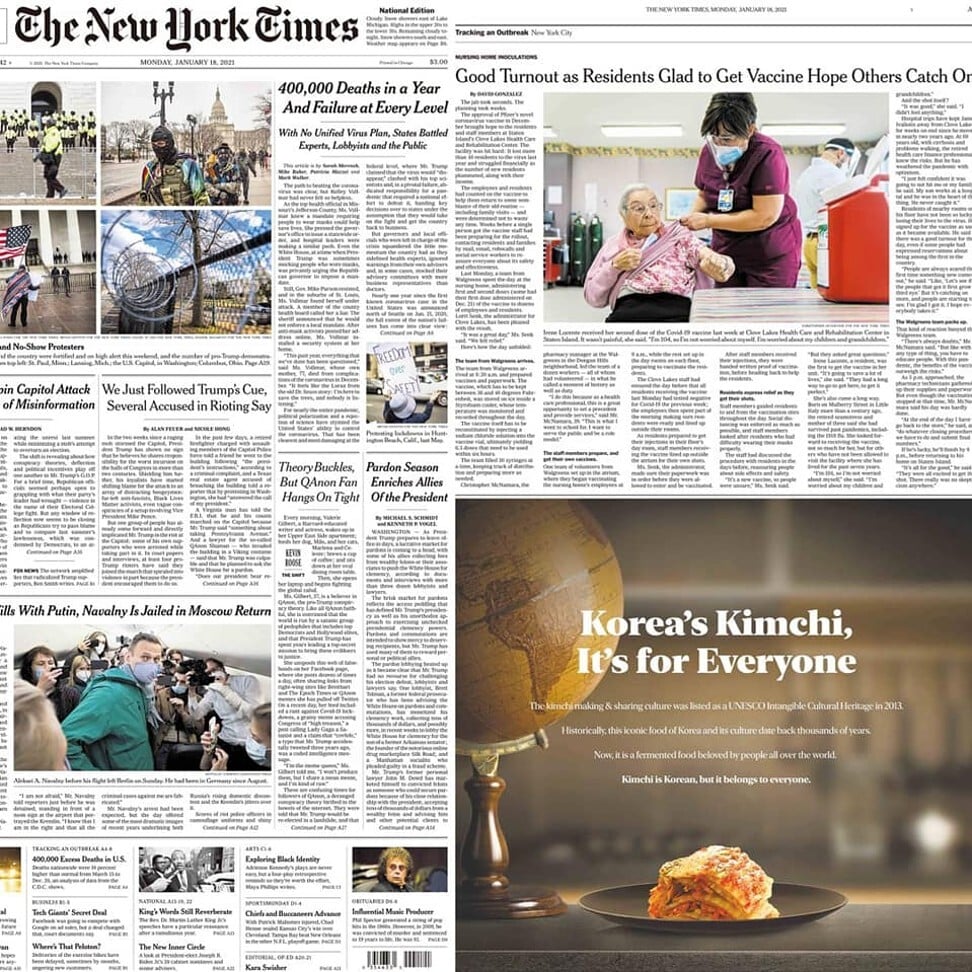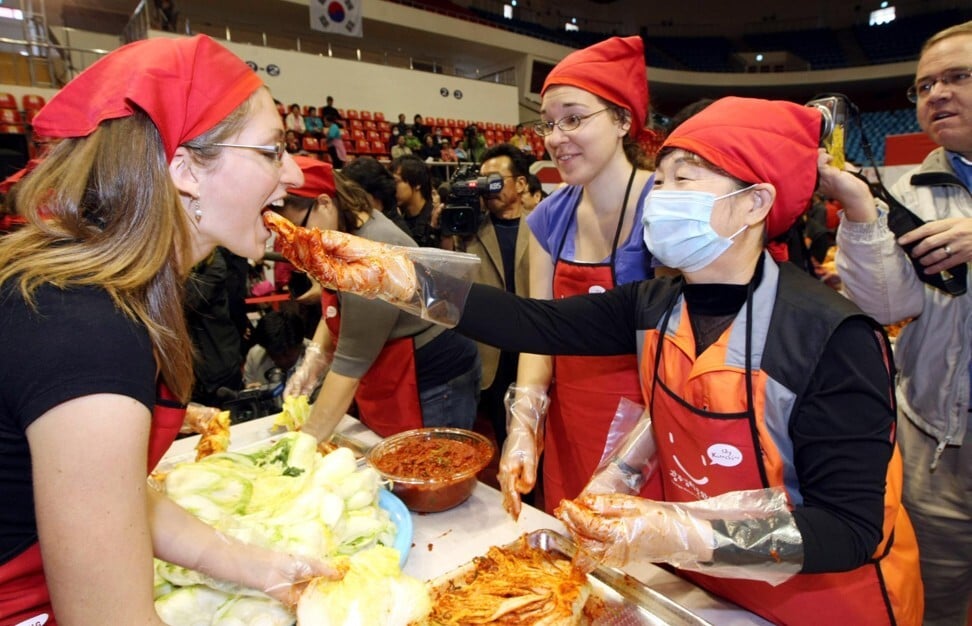Is kimchi South Korean or did China’s pao cai come first? A New York Times ad sparked the latest origin war over the beloved East Asian side dish

The controversy has been raging since late November, thanks to three main incidents – or ingredients.
The first was a result of new international regulations for the making of Chinese pao cai, a pickled vegetable dish that is also a Chinese term for kimchi. Chinese state-run media intimated that kimchi was Chinese, which was fiercely disputed by South Korea’s agricultural ministry, media and netizens.

The second involves two internet celebrities: South Korea’s Hamzy and China’s Li Ziqi. A thumbs-up response emoji by Hamzy on an online comment angered Chinese netizens and saw her online shop in China faced with closure. She has since apologised to her Chinese followers. Li on the other hand suffered backlash from Korean followers to hashtags she used as part of a vegetable pickling video.
Round three came on January 18 with a full-page ad placed in The New York Times affirming kimchi’s Korean origin. But is that the last word? It seems unlikely.

It is common to read that this important staple of both North and South Korea dates back to the end of The Three Kingdoms of Korea period (57BC to 668AD). Some though consider this reference to be about fermentation in general, including fermented vegetables.
“More serious historical studies show that the most popular and generalised form of kimchi – hot and spicy, with a lot of red pepper and prepared with Chinese cabbage – is a rather recent invention,” wrote academic Cho Hong-sik in his article “Kimchi and Korean National Identity”, in The Korean Journal of International Studies in December 2006.

He goes on to explain that while red pepper was introduced to Korea from Japan in the late 1500s, it took another 200 years for it to be used widely, with cabbage being introduced at the end of the 19th century.
Prior to cabbage, radish was the main vegetable used for kimchi. Today there are over 200 varieties, although it is cabbage kimchi that is most well known outside Korea.
Once a village activity, the making of kimchi, known as kimjang, was added to the Unesco Intangible Cultural Heritage list in 2013, which is considered by many to support its Korean origin.
Eaten every day by Koreans and with most meals, kimchi has come to be considered an indispensable part of Korean culture. Cho called it a “representative culinary symbol of Korean everyday life.”

Song Ha-seul-lam, former Korean food research and development director at two-Michelin-starred Mingles in Seoul and now head chef of Hong Kong’s Mamalee Market says: “There is a common Korean saying that, ‘If you have kimchi and rice, you have a meal.’ Kimchi and rice have played a vital role in the Korean diet for many centuries.
“Kimchi goes very deep into Korean culture, not just limited to food, but a total lifestyle,” he adds.
A sneak peek at the K-pop bands set to debut in 2021
It is this cultural importance that will ensure a continued staunch defence of kimchi’s Korean origin.
As Cho also wrote, “Because kimchi is not a trivial food, but one of the most popular cultural symbols of Korean national identity, it possesses a particularly high sensitivity when it is put on the international stage.”
Where are Singapore noodles from? How are century eggs made? Are French fries improperly named? And what’s the final verdict on where tikka masala was created? With the Origins series, STYLE delves into the often surprising beginnings of iconic dishes or foods, how they’ve evolved over time and the many ways they’re enjoyed today.
Want more stories like this? Sign up here. Follow STYLE on Facebook, Instagram, YouTube and Twitter .

- Two influencers – South Korea’s Hamzy and China’s Li Ziqi – clashed over emojis and hashtags as the ‘kimchi wars’ heat up
- Academic Seo Kyoung-duk forked out for an ad affirming kimchi’s Korean origins in the New York Times, adding extra spice to the issue